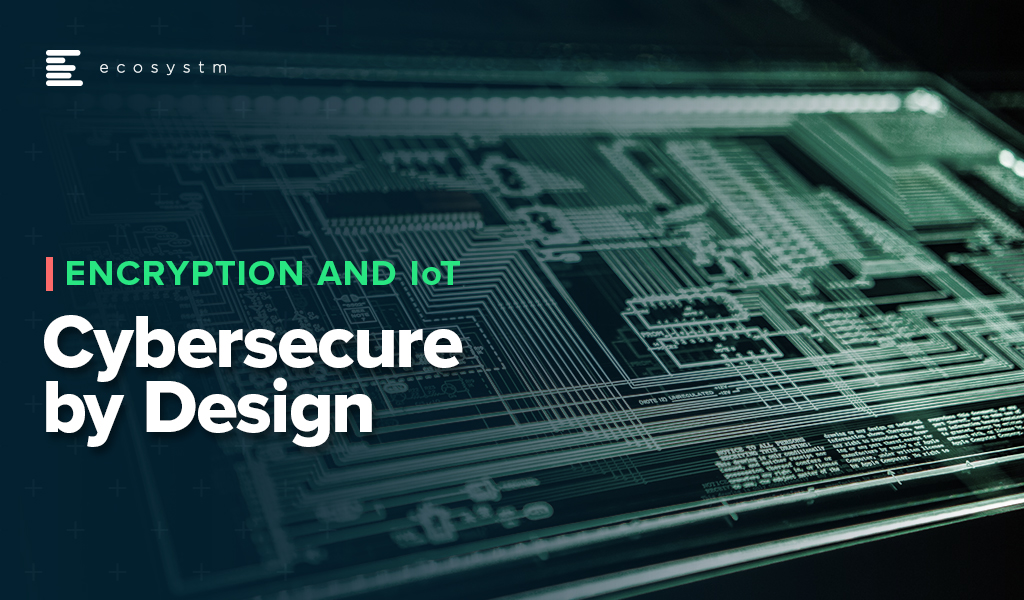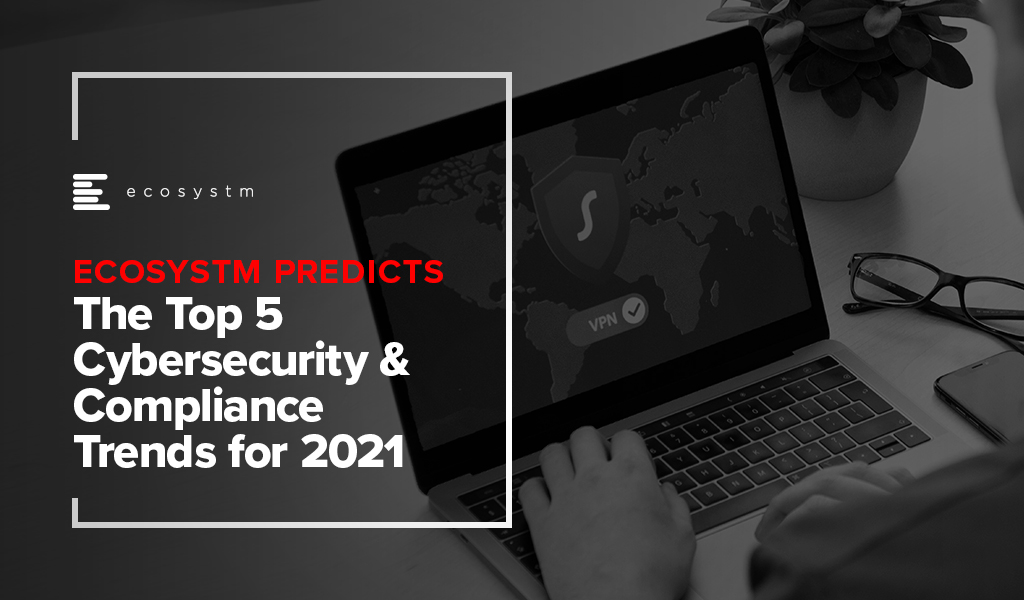As we return to the office, there is a growing reliance on devices to tell us how safe and secure the environment is for our return. And in specific application areas, such as Healthcare and Manufacturing, IoT data is critical for decision-making. In some sectors such as Health and Wellness, IoT devices collect personally identifiable information (PII). IoT technology is so critical to our current infrastructures that the physical wellbeing of both individuals and organisations can be at risk.
Trust & Data
IoT are also vulnerable to breaches if not properly secured. And with a significant increase in cybersecurity events over the last year, the reliance on data from IoT is driving the need for better data integrity. Security features such as data integrity and device authentication can be accomplished through the use of digital certificates and these features need to be designed as part of the device prior to manufacturing. Because if you cannot trust either the IoT devices and their data, there is no point in collecting, running analytics, and executing decisions based on the information collected.
We discuss the role of embedding digital certificates into the IoT device at manufacture to enable better security and ongoing management of the device.
Securing IoT Data from the Edge
So much of what is happening on networks in terms of real-time data collection happens at the Edge. But because of the vast array of IoT devices connecting at the Edge, there has not been a way of baking trust into the manufacture of the devices. With a push to get the devices to market, many manufacturers historically have bypassed efforts on security. Devices have been added on the network at different times from different sources.
There is a need to verify the IoT devices and secure them, making sure to have an audit trail on what you are connecting to and communicating with.
So from a product design perspective, this leads us to several questions:
- How do we ensure the integrity of data from devices if we cannot authenticate them?
- How do we ensure that the operational systems being automated are controlled as intended?
- How do we authenticate the device on the network making the data request?
Using a Public Key Infrastructure (PKI) approach maintains assurance, integrity and confidentiality of data streams. PKI has become an important way to secure IoT device applications, and this needs to be built into the design of the device. Device authentication is also an important component, in addition to securing data streams. With good design and a PKI management that is up to the task you should be able to proceed with confidence in the data created at the Edge.
Johnson Controls/DigiCert have designed a new way of managing PKI certification for IoT devices through their partnership and integration of the DigiCert ONE™ PKI management platform and the Johnson Controls OpenBlue IoT device platform. Based on an advanced, container-based design, DigiCert ONE allows organisations to implement robust PKI deployment and management in any environment, roll out new services and manage users and devices across your organisation at any scale no matter the stage of their lifecycle. This creates an operational synergy within the Operational Technology (OT) and IoT spaces to ensure that hardware, software and communication remains trusted throughout the lifecycle.

Rationale on the Role of Certification in IoT Management
Digital certificates ensure the integrity of data and device communications through encryption and authentication, ensuring that transmitted data are genuine and have not been altered or tampered with. With government regulations worldwide mandating secure transit (and storage) of PII data, PKI can help ensure compliance with the regulations by securing the communication channel between the device and the gateway.
Connected IoT devices interact with each other through machine to machine (M2M) communication. Each of these billions of interactions will require authentication of device credentials for the endpoints to prove the device’s digital identity. In such scenarios, an identity management approach based on passwords or passcodes is not practical, and PKI digital certificates are by far the best option for IoT credential management today.
Creating lifecycle management for connected devices, including revocation of expired certificates, is another example where PKI can help to secure IoT devices. Having a robust management platform that enables device management, revocation and renewal of certificates is a critical component of a successful PKI. IoT devices will also need regular patches and upgrades to their firmware, with code signing being critical to ensure the integrity of the downloaded firmware – another example of the close linkage between the IoT world and the PKI world.
Summary
PKI certification benefits both people and processes. PKI enables identity assurance while digital certificates validate the identity of the connected device. Use of PKI for IoT is a necessary trend for sense of trust in the network and for quality control of device management.
Identifying the IoT device is critical in managing its lifespan and recognizing its legitimacy in the network. Building in the ability for PKI at the device’s manufacture is critical to enable the device for its lifetime. By recognizing a device, information on it can be maintained in an inventory and its lifecycle and replacement can be better managed. Once a certificate has been distributed and certified, having the control of PKI systems creates life-cycle management.

Ecosystm research finds that 47% of organisations re-evaluated cybersecurity risks and management making it the biggest measure undertaken by IT Teams when COVID-19 hit. There is no denying any more that cybersecurity is a key business enabler. This year witnessed cybercrime escalating in all parts of the world and several governments issued advisories warning enterprises and citizens of the increase in the threat landscape, during and post COVID-19. Against this backdrop, Ecosystm Advisors, Alex Woerndle, Andrew Milroy, Carl Woerndle and Claus Mortensen present the top 5 Ecosystm predictions for Cybersecurity & Compliance in 2021.
This is a summary of the predictions, the full report (including the implications) is available to download for free on the Ecosystm platform here.
The Top 5 Cybersecurity & Compliance Trends for 2021
- There will be Further Expansion of M&A Activities Through 2021 and Beyond
As predicted last year, the market is set to witness mergers and acquisitions (M&As) to consolidate the market. The pandemic has slowed down M&A activities in 2020. However, the market remains fragmented and there is a demand for consolidation. As the cyber market continues to mature, we expect M&A activities to ramp up over the next couple of years especially once we emerge from COVID-19. Some organisations that understand the full impact of the shift to remote working and the threats it creates have embraced the opportunity to acquire, based on perceived value due to COVID-19. The recent acquisition of Asavie by Akamai Technologies is a case in point. Asavie’s platform is expected to strengthen Akamai’s IoT and mobile device security and management services.
- After a Year of Pandemic Leniency, Regulators will Get Stricter in 2021
The regulators in the EU appear to have gone through a period of relative leniency or less activity during the first few months of the pandemic and have started to increase their efforts after the summer break. Expect regulators – even outside the EU – to step up their enforcement activities in 2021 and seek larger penalties for breaches.
Governments continue to evolve their Compliance policies across broader sectors, which will impact all industries. As an example, in Australia, the Federal Government has made changes to its definition of critical infrastructure, which brings mandates to many more organisations. Governments have shown an acute awareness of the rise in cyber-attacks highlighted by several high-profile breaches reported in mainstream media. Insider threats – highlighted by Tesla, where an employee raised the allegations of bribery by unknown third parties in exchange for exfiltrating corporate information – will also lead regulators to double down on their enforcement activities.
- The Zero Trust Model Will Gain Momentum
Remote working has challenged the traditional network security perimeter model. The use of personal and corporate devices to access the network via public networks and third-party clouds is creating more opportunity for attackers. Organisations have started turning to a Zero Trust security model to mitigate the risk, applying advanced authentication and continuous monitoring. We expect the adoption of the Zero Trust model to gain momentum through 2021. This will also see an increase in managed services around active security monitoring such as Threat Detection & Response and the increased adoption of authentication technologies. With an eye on the future, especially around quantum computing, authentication technologies will need to continually evolve.
- The Endpoint Will be the Weakest Link
The attack surface continues to grow exponentially, with the increase in remote working, IoT devices and multicloud environments. Remote endpoints require the same, if not higher levels of security than assets that sit within corporate firewalls, and it will become very clear to organisations that endpoints are the most vulnerable. Remote workers are often using unsecure home Wi-Fi connections and unpatched VPNs, and are increasingly vulnerable to phishing attacks. IoT device passwords are often so weak that brute-force attackers can enter networks in milliseconds.
Although endpoint security can be dealt with through strict policies together with hardware or software authentication, the difficult part is to adopt an approach that retains a relatively high level of security without having a too negative an impact on the employee experience. Experience shows that if the security measures are too cumbersome, employees will find ways to circumvent them.
- Hackers Will Turn the Table on AI Security
Cybersecurity vendors are increasingly offering solutions that leverage AI to identify and stop cyber-attacks with less human intervention than is typically expected or needed with traditional security approaches. AI can enhance cybersecurity by better predicting attacks enabling more proactive countermeasures, shortening response times, and potentially saving cybersecurity investment costs. The problem is that the exact same thing applies to the hackers. By leveraging AI, the costs and efforts needed to launch and coordinate large hacker attacks will also go down. Hackers can automate their attacks well beyond the use of botnets, target and customise their attacks with more granularity than before and can effectively target the biggest weakness of any IT security system – people.
Already, phishing attacks account for many of the breaches we see today typically by employees being tricked into sharing their IT credentials via email or over the phone. As we move forward, these types of attacks will become much more sophisticated. Many of the deepfake videos we see have been made using cheap or free AI-enabled apps that are easy enough for even a child to use. As we move into 2021, this ability to manipulate both video and audio will increasingly enable attackers to accurately impersonate individuals.




